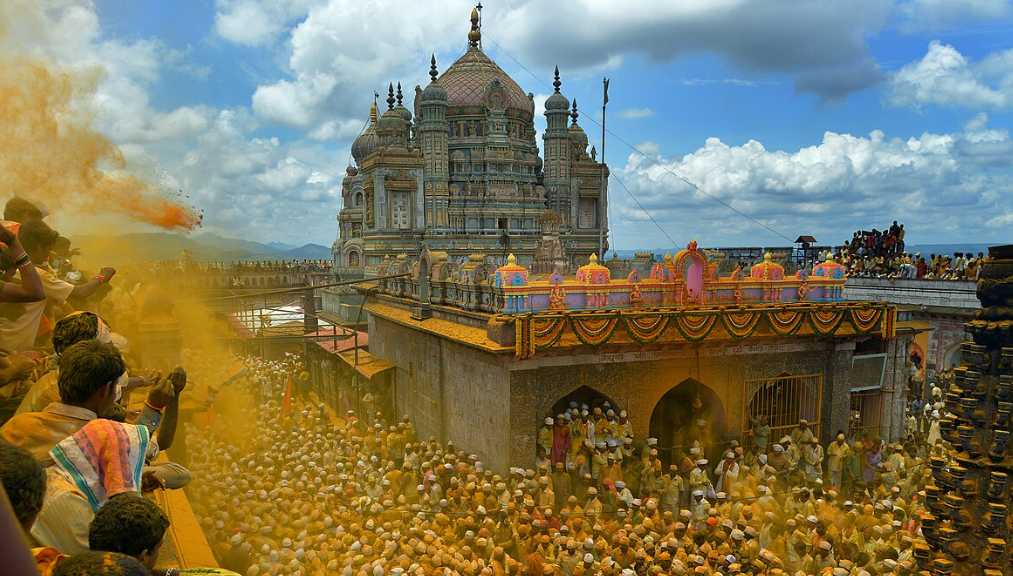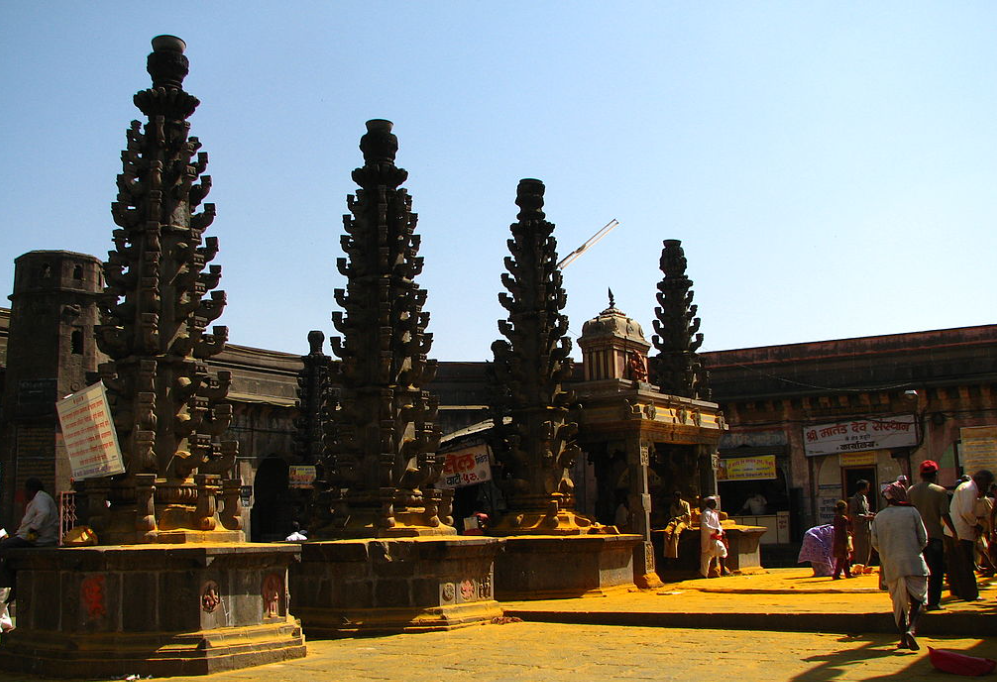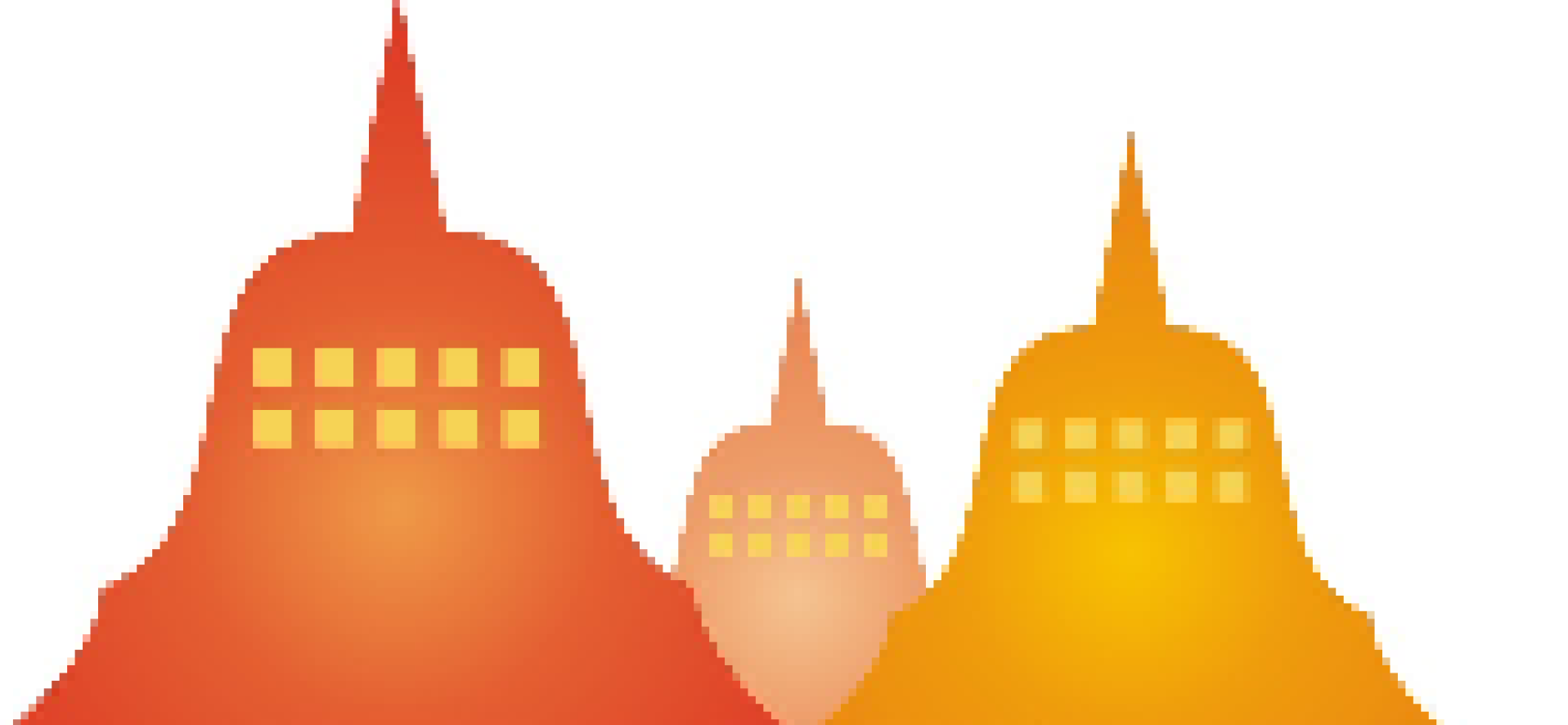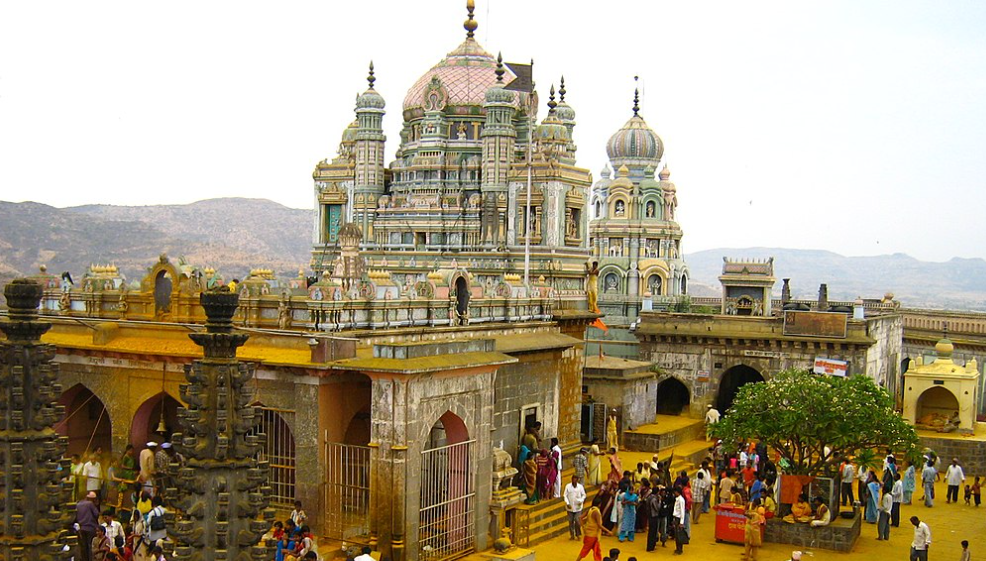Friends let me take you to Khandoba temple Jejuri today one of the major Pilgrimage Center of Maharashtra. Southeast of Pune city is the town and municipality of Jejuri, which is 48 kilometres from Pune Junction.
One of the most visited temples in Pune is the hamlet of Jejuri, which is well-known for housing Khandoba Temple, one of Maharashtra’s most revered temples.
The Jejuri Khandoba Temple honours Khandoba, who is also referred to in the area as Mhalsakant or Malhari Martand.
The most revered deity among the Dhangar, the oldest tribes in Maharashtra, is Khandoba.
Khandoba is said to be a Sakamabhakti god, meaning that he grants all of his devotees’ wishes. Jejuri is well-known for its ancient Deep Mala.
Situated on a hill, the Khandoba temple in Jejuri has excellent views in every direction. A almost 200-step staircase leads up to the sanctum sanctorum.
On either side of the temple’s main entrance are several stone representations of elephants.
The Khandoba temple is situated in the middle of a stone pavement that encircles the whole level plateau above the hill.
The shrined deity of Sri Khandoba within the temple is breathtakingly gorgeous. The Jejuri Temple is home to three weapons: a paral, a damaru, and a sword. Not only are they extremely beautiful, but they also have historical significance.
Every year, on the festival of Dussera, the temple hosts a sword competition.
The winner is the one who raises the temple sword the highest for the longest period of time. Those from all across the state come here to celebrate the Bandara festival.

Khandoba temple Jejuri history
The sages were distressed and the Earth was being disturbed by Malla and Mani. When Indra and Vishnu acknowledged their limitations, the Sages turned to Shiva for assistance. Shiva and his army mounted atop Nandi, the bull, and assumed the form of Khandoba before engaging in combat with demons. Turmeric covers his body, and his avatar is said to have a third eye on his brow, shaped like a semicircular moon.
It took a lengthy battle, but Khandoba eventually defeated the demons. Mani begged for a blessing from him and offered his white horse as an expression of repentance. He requested to be present in each of Khandoba’s temples, and the people will give him goat flesh. Shiva turned him into a devil after granting his desire. What if Khandoba demanded the destruction of the world and human flesh, Malla questioned? Malla was promptly beheaded by Khandoba after becoming enraged, and it fell to the shrine’s stairs where it was crushed under the boots of the worshippers.

Khandoba had two wives, Banas Mhalsa, who is worshipped as Ganga and Parvati in Hinduism. Hegadi Pradhan, the brother-in-law of Khandoba, is regarded as a manifestation of Lord Vishnu. The devils are referred to as Madhu and Kaitaba, respectively, while the horse that Mani donated is thought of as Nandi.
According to another tale, Khandoba’s two wives fought alongside him. As each drop of the ichors of Mani created a new devil, they were gathering them. Finally, all the blood had been consumed by Khandoba’s dog.
The temple was constructed around 1608 AD. Ragho Mambaji, a Maratha leader, finished the central mandap and other elements in 1637 AD. The Holkar emperors constructed the outer chambers and other areas. Tukoji Holkar assisted in the completion of the tank and battlefield around 1770 AD.
The temple priests worship Khandoba with Indian Bael leaves, turmeric, onion, and other vegetables. They also provide a sweet onion and brinjal dish. As Naivedya, he is served a vegetarian dish. Despite this, his followers regard him as a non-vegetarian. Devotees will occasionally sacrifice goat flesh. The ritual is performed outside the temple because meat is not permitted inside.
The temple celebrates A 6-day festival in the Hindu month of Margashirsha, as a tribute to Khandoba.
The celebration begins on the first lunar day and concludes on the sixth. According to legend, Khandoba slew the demon on the sixth day. On the sixth day of Pember, a yatra is organised, which lasts till Amavasya.
Somvati Amavasya is another event observed in Jejuri. On this day, the pictures of Khandoba and Mhalasa are brought in a palanquin from the temple to the Karha River. The photos are douched, cleaned, and dedicated here. Pilgrims fast for six days and then break it on the seventh. On this day, at Khandoba’s insistence, they attend a feast.
Jejuri Khandoba Temple is well-known for its Bhandara festival, which attracts over five lakh worshippers. Showers of haldi or turmeric, also known as ‘bhandara,’ turn the entire temple grounds and steps yellow. The bhandara festival, also known as’sonyachi Jejuri’ or golden Jejuri, is held nearly three times a year.
Khandoba temple Jejuri website: www.khandobaandur.com or phone +91 95277 70420.
https://www.khandoba.com/index
Every year, travellers flock to the temple because of its intriguing narrative. The temple is one of the most well-known Hindu shrines. Every year, many Jain devotees visit the shrine in addition to Hindus.
How to Reach Khandoba Temple
The temple is around 50 km from Pune and is well-connected to the rest of the state. To go there, people can take government buses or cabs from Pune.
The Jejuri railway station is the nearest station. There are also trains from Mumbai and Pune.
Because Jejuri is a prominent pilgrimage place in Maharashtra and is only 50 kilometres from Pune, it is well connected to all major cities in India as well as all important cities throughout the world.
You can easily book flights to Pune from anywhere in the world, and then a private vehicle to Jejuri. The town contains railway stations from which trains may be taken to practically all important cities in India.
Every year, hundreds of tourists and devotees from all across India come to Jejuri to see the Khandoba Temple.
As a result, public transport is rapidly evolving to meet their needs.
- Jejuri is only 50 kilometres from Pune,
- 266 kilometres from Nashik,
- 171 kilometres from Matheran,
- 120 kilometres from Lonavala,
- 217 kilometres from Shirdi,
- 163 kilometres from Bhimashankar, and
- 294 kilometres from Trambak.
Khandoba Temple Jejuri Timings
| Monday | 5 AM to 9 PM |
| Tuesday | 5 AM to 9 PM |
| Wednesday | 5 AM to 9 PM |
| Thursday | 5 AM to 9 PM |
| Friday | 5 AM to 9 PM |
| Saturday | 5 AM to 9 PM |
| Sunday | 5 AM to 9 PM |
Darshan is available daily from 6.30 a.m. to 12 p.m.
Pooja and aarti are performed between 12 and 12.30 p.m.
From 12.30 p.m. to 2 p.m., the maha Prasad bhog is served.

